Fresh Cook

Is there a way to cook scallops without overcooking them ?
Scallops are a delightful seafood option that many people enjoy for their tender, sweet flavor. However, they can easily be overcooked, turning rubbery and tough. Here's a guide to help you cook scallops to perfection: 1. Choose fresh scallops and pat them dry before cooking. Moisture is the enemy of a good sear. 2. Pan-searing is the most common method, but grilling and baking are also options. Cook scallops over medium-high heat until golden crust forms, then flip and cook for another minute or two. 3. Timing is key - don't walk away from the stove and check for doneness when scallops are almost opaque with a slightly translucent center. 4. Let scallops rest for a minute or two after removing from heat to allow juices to redistribute. 5. Serve scallops with simple sides like lemon butter pasta or a fresh green salad, and garnish with fresh herbs such as parsley, chives, or mint for an added layer of flavor.

How do I prepare a perfect grilled fish ?
Grilling fish is a delightful culinary experience that can be perfected with the right preparation and process. Here's a step-by-step guide to help you achieve perfection every time you fire up the grill for your favorite fish: 1. **Preparation** - **Choosing the Right Fish**: Opt for fresh fish, aim for fillets that are at least 1-inch thick, and choose types of fish like salmon, sea bass, and swordfish that are great for grilling due to their natural fat content. - **Marination**: Decide on the flavor profile you want, marinate the fish for at least 30 minutes to an hour in the refrigerator, but be cautious not to leave it too long as the acid in the marinade can start to cook the fish. - **Grill Prep**: Ensure your grill is clean to avoid any unwanted flavors and lightly oil the grates to prevent sticking. 2. **Grilling Process** - **Preheating the Grill**: Preheat the grill to medium-high heat, ideal temperature range between 375°F to 450°F (190°C to 230°C). - **Cooking the Fish**: Place the fish skin side down on the grill, flip the fish only once, and use a wide spatula to carefully flip and remove the fish without breaking it. - **Checking for Doneness**: The flesh should turn from translucent to opaque and give a gentle poke; it should flake easily with a fork. 3. **Serving Suggestions** - **Lemon Wedges**: Serve with wedges of lemon to add a fresh citrus note. - **Herb Sauce**: Pair with a simple herb sauce or compound butter. - **Side Dishes**: Consider serving with grilled vegetables, a fresh salad, or roasted potatoes. By following these steps, you will be able to prepare a perfect grilled fish that is sure to impress your guests or simply satisfy your own cravings for a delicious meal. Enjoy the process and savor the flavor!

How can I incorporate more whole foods into my home cooking ?
The provided text offers a comprehensive guide on how to incorporate more whole foods into one's home cooking routine. Here is a summary of the key points: 1. **Plan Your Meals Around Whole Foods:** Engage in weekly menu planning, focusing on meals that include whole food ingredients, and make a shopping list based on this plan to avoid processed items. 2. **Start with Whole Grains:** Swap refined grains like white rice and pasta with whole grain versions such as brown rice and whole wheat pasta. Experiment with different whole grains like quinoa and barley for added variety. 3. **Include More Fruits and Vegetables:** Aim for a diverse range of fruits and vegetables to get a wide spectrum of nutrients. Prep them at the start of the week for easy access. 4. **Choose Lean Proteins:** Opt for skinless poultry and fish over red meats. Incorporate plant-based proteins like legumes, nuts, and seeds. 5. **Use Healthy Fats:** Cook with olive oil or avocado oil instead of butter or margarine. Add nuts and seeds to dishes for a healthy fat boost. 6. **Limit Processed Foods:** Be mindful of food labels and avoid products with numerous unrecognizable ingredients. Make your own snacks using whole food ingredients. 7. **Get Creative with Spices and Herbs:** Use these natural flavor enhancers instead of salt or high-sodium seasonings. Consider growing your own herbs for fresh flavors year-round. 8. **Cook from Scratch When You Can:** Make homemade stocks, sauces, and dressings instead of buying pre-made versions. Batch cook whole food meals and freeze leftovers for quick meals later. 9. **Embrace Fermented Foods:** Include probiotic-rich foods like kimchi and sauerkraut for gut health benefits. 10. **Keep Learning and Adapting:** Continuously educate yourself about whole foods and their nutritional benefits. Stay open to trying new whole foods to keep meals exciting and varied. By following these steps, individuals can successfully integrate more whole foods into their home cooking, leading to a healthier lifestyle for themselves and their families.
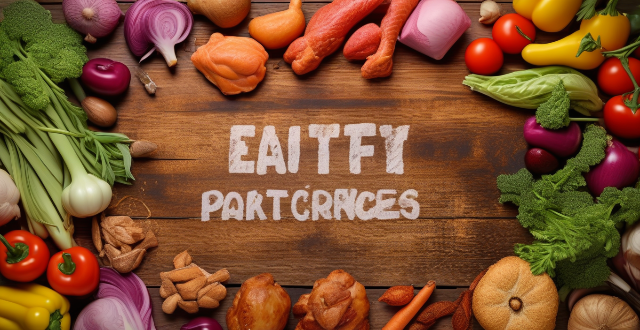
Can you suggest any easy-to-make lunch box recipes ?
The text provides a list of easy-to-make lunch box recipes. The first recipe is for grilled chicken and vegetable skewers, which involves marinating chicken breasts in a favorite sauce, cutting vegetables into large chunks, threading them onto skewers, and grilling until cooked through. The second recipe is for hummus and veggie wrap, which involves spreading hummus on a whole wheat tortilla, adding sliced cucumbers, carrots, and bell peppers, rolling up tightly, and slicing in half. The third recipe is for tuna salad lettuce wraps, which involves mixing canned tuna with mayo, lemon juice, and chopped celery, spooning the mixture onto lettuce leaves, and rolling up. The fourth recipe is for quinoa salad, which involves cooking quinoa according to package instructions, tossing with chopped tomatoes, cucumbers, feta cheese, and a simple vinaigrette, and packing in a container with pita chips or crackers. The fifth recipe is for egg salad sandwich, which involves hard boiling eggs, chopping them up, mixing with mayo, mustard, salt, and pepper, and serving on whole grain bread with lettuce and tomato. The sixth recipe is for Caprese salad, which involves slicing fresh mozzarella and tomatoes, drizzling with olive oil and balsamic vinegar, adding fresh basil leaves, and seasoning with salt and pepper. The seventh recipe is for turkey and cheese roll-ups, which involves laying out slices of turkey and cheese on a slice of bread, rolling up tightly, and slicing into bite-sized pieces. The eighth recipe is for Greek yogurt parfait, which involves layering Greek yogurt, granola, and fresh fruit in a jar or container, and topping with honey or maple syrup if desired. The ninth recipe is for black bean and corn salad, which involves rinsing and draining a can of black beans, mixing with canned corn, diced red onion, cherry tomatoes, and a lime vinaigrette, and serving chilled with tortilla chips or crackers. The tenth recipe is for avocado toast, which involves mashing an avocado with lime juice and salt, spreading on toasted whole grain bread, and topping with everything bagel seasoning or red pepper flakes for extra flavor.

How do I make authentic spaghetti carbonara ?
Spaghetti Carbonara: A Guide to Making an Authentic Italian Dish Spaghetti Carbonara is a classic Italian dish known for its simplicity and rich flavors. Here's a step-by-step guide on how to make an authentic Spaghetti Carbonara: **Ingredients Needed:** - **Pasta:** 1 pound spaghetti - **Cheese:** 1 cup grated Pecorino Romano cheese (or a mix of Pecorino and Parmesan) - **Meat:** 1/2 cup diced pancetta or guanciale - **Garlic:** 4 cloves, minced - **Eggs:** 3 large - **Seasoning:** Freshly ground black pepper and salt - **Fat:** 1 tablespoon olive oil and 1 tablespoon butter **Cooking Process:** 1. **Preparation:** Gather all ingredients before starting. 2. **Cook the Pasta:** Boil spaghetti in salted water until al dente, reserving some pasta water before draining. 3. **Cook Pancetta/Guanciale:** Heat olive oil, cook the meat until crispy, then remove from skillet. 4. **Add Garlic:** Cook garlic in the rendered fat without burning. 5. **Beat Eggs:** In a bowl, beat eggs with a pinch of salt. 6. **Combine Ingredients:** Toss cooked spaghetti in the skillet with the rendered fat. Remove from heat and let cool slightly. 7. **Add Egg Mixture and Cheese:** Pour egg mixture over spaghetti, quickly tossing to combine. Add grated cheese gradually while tossing to create a creamy sauce. Use reserved pasta water if needed. 8. **Add Meat and Season:** Return the cooked pancetta or guanciale to the skillet, season generously with black pepper, and adjust salt. 9. **Serve:** Serve immediately, garnished with additional cheese and black pepper. **Tips for Perfection:** - Ensure egg safety by using a hot skillet to gently cook them into a sauce. - Use Pecorino Romano or a mix with Parmesan for authenticity; avoid pre-grated cheeses. - Reserve pasta water for sauce consistency adjustments. By following these steps and tips, you can enjoy a delicious and authentic Spaghetti Carbonara at home.

How can I make a fast and easy dinner ?
Here are some tips on how to make a fast and easy dinner: 1. Plan ahead by taking time during the weekend to plan your meals for the week. This will help you avoid last-minute trips to the grocery store and ensure that you have all the ingredients you need on hand. 2. Choose simple recipes that require minimal preparation and cooking time. Look for recipes that use fewer than five ingredients and can be cooked in one pot or pan. 3. Use convenience foods such as pre-chopped vegetables, pre-cooked proteins, and ready-to-heat side dishes to save time and effort in the kitchen. 4. Cook enough food for two meals at once and refrigerate or freeze the leftovers for another day. This will save you time and ensure that you always have a healthy meal ready to go. 5. Clean up as you cook by wiping down counters, washing dishes, and putting away ingredients as soon as you're done using them. This will keep your kitchen tidy and prevent clutter from building up while you cook.
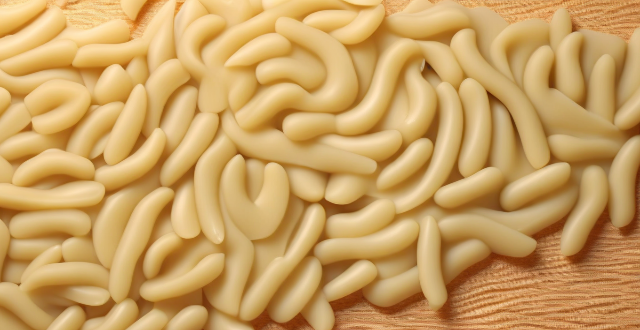
How do I cook perfect al dente pasta at home ?
To cook al dente pasta, start by selecting a high-quality pasta and filling a large pot with water. Add salt and bring the water to a boil. Once boiling, add the pasta and stir immediately. Check for doneness frequently and drain as soon as it reaches the desired consistency. Serve immediately or reserve for later use. Tips include undercooking slightly, saving some pasta water, avoiding overcrowding the pot, and using a timer to remind yourself to check for doneness.
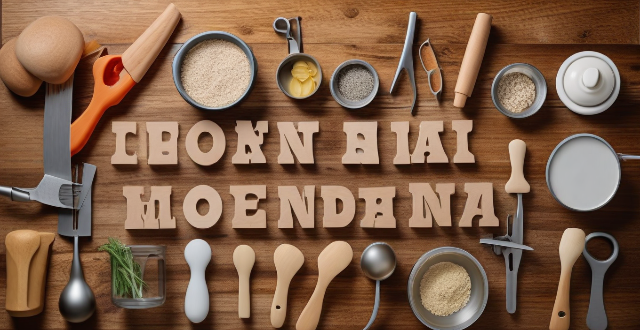
What are the essential kitchen tools every home cook should have ?
The text provides a list of essential kitchen tools that every home cook should have, including a chef's knife, cutting board, measuring cups and spoons, mixing bowls, saucepan, skillet/frying pan, baking sheet/roasting pan, whisk, wooden spoon or spatula, can opener, garlic press, grater, peeler, tongs, and colander/strainer. These tools are important for preparing meals and ensuring accurate measurements and successful cooking.

What is the best way to cook tempura batter ?
Tempura is a Japanese dish that originated in the late 16th century. It consists of seafood, vegetables, or other ingredients dipped in a wheat-flour batter and deep-fried. The key to perfect tempura lies in the preparation of the batter. Here are some tips on how to make the best tempura batter: Ingredients: - Vidalia Onions - These sweet onions are low in sulfuric compounds, which makes them easier to digest. They also have a lower fiber content than yellow or white onions, making them less likely to cause gas or bloating. - Garlic - Garlic is rich in antioxidants and has anti-inflammatory properties. It's also known for its immune-boosting benefits. - Ginger - Ginger has been used for centuries as a natural remedy for digestive issues. It can help relieve nausea and vomiting, reduce gas and bloating, and even alleviate symptoms of acid reflux. - Chicken Broth - Chicken broth is an excellent source of minerals like calcium, magnesium, and potassium. It also contains collagen, which is great for gut health. - Bone Broth - Bone broth is rich in amino acids like glycine and proline, which can help repair the gut lining and reduce inflammation. - Coconut Oil - Coconut oil contains medium-chain triglycerides (MCTs), which are easily digested and can provide quick energy for the body. It also has antimicrobial properties that can help support gut health. Preparation: 1. Chop your chosen vegetables into small pieces. This will ensure that they cook evenly and absorb the flavors of the broth. 2. In a large pot, heat up some coconut oil over medium heat. Add the chopped onions, garlic, and ginger, and sauté until they become fragrant and slightly softened. 3. Pour in the chicken broth and bone broth, then bring everything to a boil. 4. Once the broth is boiling, add in your chopped vegetables. Stir everything together so that the vegetables are fully submerged in the liquid. 5. Add salt, pepper, and any other desired seasonings to taste. Consider adding herbs like thyme or rosemary for additional flavor. 6. Reduce the heat to low and let the soup simmer for at least 30 minutes, or until the vegetables are tender and fully cooked through. 7. Ladle the hot soup into bowls and serve immediately. Enjoy the warmth and comfort of this delicious and gut-friendly vegetable soup!

Can you suggest any food markets that should not be missed when traveling ?
Food markets around the world offer a window into local culture and cuisine. Here are some must-visit food markets: 1\. Boqueria Market, Barcelona, Spain: Known for its fresh produce, seafood, and tapas bars. 2\. Grand Bazaar, Istanbul, Turkey: Offers Turkish delights, spices, and sweets. 3\. La Boqueria, Mexico City, Mexico: A feast for the senses with vibrant colors and aromatic smells. 4\. Kreta Ayer Wet Market, Singapore: Located in Chinatown and known for live seafood and Chinese herbs. 5\. Tsukiji Fish Market, Tokyo, Japan: Renowned for its early morning tuna auctions and seafood. 6\. Mercado de San Miguel, Madrid, Spain: Housed in a historic building with gourmet tapas and wines. 7\. Jemaa el-Fnaa Market, Marrakech, Morocco: A night market surrounded by food stalls offering Moroccan cuisine. 8\. Pike Place Market, Seattle, USA: Known for its fresh produce, artisanal foods, and local crafts. 9\. Queen Victoria Market, Melbourne, Australia: Offers a mix of fresh produce, gourmet foods, and international cuisine. 10\. Or Tor Kor Market, Bangkok, Thailand: Known for its fresh produce, street food, and local ingredients. These markets provide not only delicious food but also a chance to immerse oneself in the local culture.

How do I make a traditional Indian curry at home ?
How to Make a Traditional Indian Curry at Home Indian curry is a flavorful and aromatic dish that can be made with various vegetables, meats, or legumes. Here's a step-by-step guide to making a traditional Indian curry at home: Ingredients: - 2 tablespoons vegetable oil - 1 onion, finely chopped - 2 garlic cloves, minced - 1 tablespoon grated fresh ginger - 2 teaspoons ground cumin - 1 teaspoon ground coriander - 1 teaspoon turmeric powder - 1 teaspoon paprika - 1 teaspoon salt - 1 can (14 ounces) diced tomatoes - 1 can (14 ounces) coconut milk - 1 pound chicken breasts or thighs, cut into bite-sized pieces - Fresh cilantro leaves, chopped (optional) Instructions: Step 1: Heat the Oil Heat the vegetable oil in a large skillet over medium heat. Step 2: Sauté the Onion Add the chopped onion to the skillet and cook until it becomes translucent, stirring occasionally. This should take about 5 minutes. Step 3: Add Garlic and Ginger Stir in the minced garlic and grated ginger and cook for another minute until fragrant. Step 4: Add Spices Add the ground cumin, ground coriander, turmeric powder, paprika, and salt to the skillet. Stir well to combine with the onion mixture. Cook for about 30 seconds until the spices are fragrant. Step 5: Add Tomatoes and Coconut Milk Pour in the can of diced tomatoes and coconut milk into the skillet. Stir well to combine all the ingredients. Bring the mixture to a simmer. Step 6: Add Chicken Add the bite-sized pieces of chicken to the skillet. Stir well to coat the chicken with the sauce. Cover the skillet with a lid and let it simmer for about 20 minutes or until the chicken is cooked through. Step 7: Garnish with Cilantro (Optional) Once the chicken is cooked, remove the skillet from heat and sprinkle some fresh cilantro leaves on top of the curry if desired. Your traditional Indian curry is now ready to serve! Enjoy it with rice or naan bread for a complete meal.

What are some easy and delicious vegetarian recipes for beginners ?
Vegetarianism is a popular dietary choice, but it can be daunting for beginners to find easy and delicious recipes. Here are some simple vegetarian dishes that are perfect for those new to plant-based eating: ## **1\. Roasted Vegetable Pasta** This colorful pasta dish is packed with flavor and nutrition. **Ingredients:** * 1 cup cherry tomatoes, halved * 1 zucchini, sliced * 1 red bell pepper, sliced * 1 yellow onion, chopped * 2 garlic cloves, minced * 8 oz whole wheat pasta * 2 tbsp olive oil * Salt and pepper to taste * Fresh basil leaves for garnish **Instructions:** 1. Preheat oven to 400°F (200°C). 2. Toss the vegetables in olive oil, salt, and pepper. 3. Arrange the vegetables on a baking sheet and roast for 25 minutes or until tender. 4. Cook the pasta according to package instructions. 5. In a large bowl, combine the roasted vegetables and cooked pasta. 6. Garnish with fresh basil leaves and serve warm. ## **2\. Chickpea Curry** This creamy and flavorful curry is perfect for beginners. **Ingredients:** * 1 can chickpeas, drained and rinsed * 1 onion, diced * 2 garlic cloves, minced * 1 tbsp curry powder * 1 tsp ground cumin * 1 tsp ground coriander * 1 tsp turmeric * 1 can coconut milk * Salt to taste **Instructions:** 1. Heat a pan over medium heat and add a tablespoon of oil. 2. Sauté the onion and garlic until soft. 3. Add the spices and cook for another minute. 4. Stir in the chickpeas and coconut milk. 5. Bring to a simmer and cook for 10 minutes or until the sauce thickens. 6. Season with salt and serve hot with rice or naan bread. ## **3\. Lentil Soup** Lentil soup is hearty, nutritious, and easy to make. **Ingredients:** * 1 cup green lentils, rinsed * 1 onion, diced * 2 garlic cloves, minced * 2 carrots, diced * 2 stalks celery, diced * 4 cups vegetable broth * 1 bay leaf * Salt and pepper to taste

What are the best Italian pasta recipes for beginners ?
The provided text offers two Italian pasta recipes suitable for beginners: Spaghetti Carbonara and Penne all'Arrabbiata. The first recipe includes ingredients like spaghetti, bacon, garlic, Parmesan cheese, and egg yolks, and involves cooking the spaghetti, making a bacon-garlic mixture, and combining everything with a cheese-egg yolk mixture. The second recipe calls for penne pasta, olive oil, garlic, red pepper flakes, crushed tomatoes, salt, pepper, and basil leaves, and consists of cooking the penne, preparing a spicy tomato sauce, and combining them. Both dishes are described as easy to prepare and full of flavor.

How do I properly season my stir-fry dishes ?
When it comes to stir-fry dishes, seasoning is key to achieving that perfect balance of flavors. Here are some tips on how to properly season your stir-fry dishes: 1. Choose the right ingredients: Select fresh vegetables and proteins that will complement each other in terms of flavor and texture. 2. Use a variety of sauces and spices: Experiment with different sauces and spices to find the perfect combination for your dish. 3. Balance sweet, sour, salty, and spicy flavors: A good stir-fry should have a balance of these four flavors. 4. Cook in batches and use high heat: Cook your ingredients in batches over high heat to ensure even cooking and maximum flavor. 5. Taste and adjust as needed: Taste your stir-fry as you go and adjust the seasoning as needed.

What are some vegetarian Italian pasta recipes ?
Italian cuisine is known for its delicious pasta dishes, and there are plenty of vegetarian options to choose from. Here are some vegetarian Italian pasta recipes that you can try: 1. Spaghetti with Tomato Sauce 2. Mushroom Stroganoff 3. Pesto Pasta 4. Roasted Vegetable Pasta 5. Creamy Spinach Pasta

How can I prepare a quick and tasty soup ?
In this text, the author provides a simple and quick recipe for preparing a tasty soup at home. They detail the ingredients needed, including olive oil, onion, garlic, carrots, celery, zucchini, vegetable broth, white beans, spinach, salt, pepper, and fresh herbs for garnish. The instructions are broken down into six steps: sautéing the vegetables, adding broth and beans, simmering, adding spinach, seasoning, and garnishing before serving. The author also offers tips for variations, adding protein, and spicing up the soup. Overall, the text emphasizes the versatility and nutritional value of soups while providing a straightforward recipe for a delicious homemade option.
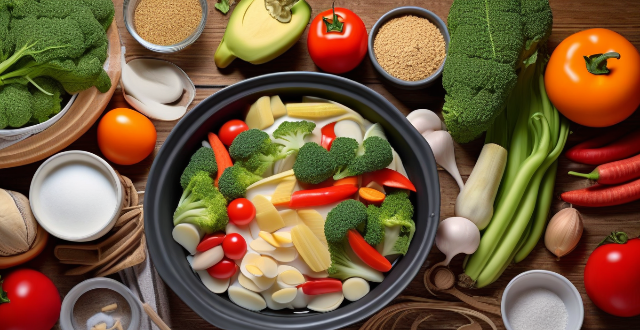
How can I make my favorite takeout dishes at home ?
Learn how to make your favorite takeout dishes at home with these tips and tricks. Gather all the necessary ingredients, including spices, proteins, vegetables, sauces, and rice or noodles. Equip yourself with sharp knives, mixing bowls, a wok or large pan, a steamer basket, and a rice cooker or pot. Master techniques such as marinating, stir-frying, steaming, and simmering. Don't rush the process; taste as you go; use fresh ingredients; experiment with spices; and practice makes perfect. Making your favorite takeout dishes at home is not only cost-effective but also allows you to customize them to your liking.

What are the best practices for storing food to maintain its safety ?
Storing food safely is crucial to prevent foodborne illnesses and ensure that your meals are fresh and flavorful. Here are some best practices to follow when storing food: ### Refrigeration - Store raw meat, poultry, and seafood separately from other foods to avoid cross-contamination. Use airtight containers or wrap them tightly in plastic wrap. - Keep dairy products like milk, cheese, and yogurt on the upper shelves of the refrigerator, where the temperature is more consistent. - Store eggs in their original carton on a middle shelf to maintain a constant temperature. - Use leftovers within three to four days and store them in covered containers in the refrigerator. - Check expiration dates regularly and discard any expired products. ### Freezing - Label all frozen items with the date of freezing and the content. - Freeze meats individually before storing them together to make it easier to thaw only what you need. - Leave space around frozen items to allow for proper air circulation and faster freezing times. - Do not overload the freezer as this can cause uneven freezing and spoilage. ### Pantry Storage - Keep dry goods like grains, pasta, and cereals in airtight containers to prevent moisture and pests from getting in. - Store oils and vinegars away from direct sunlight to prevent rancidity. - Rotate pantry items regularly, placing new items behind older ones to use up older stock first. - Monitor for signs of pests and take immediate action if any are found. ### General Guidelines - Clean your refrigerator and freezer regularly to remove spills and prevent bacteria growth. - Wash hands thoroughly before handling food. - Use separate cutting boards for raw meats and vegetables to avoid cross-contamination. - Cook foods to their recommended internal temperatures to kill harmful bacteria.
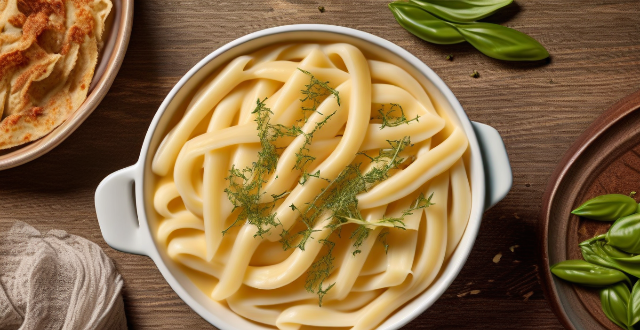
How do I make a creamy pasta sauce without using heavy cream ?
To make a creamy pasta sauce without using heavy cream, start by sautéing aromatics like onions and garlic in olive oil. Then, add vegetable or chicken broth and unsweetened non-dairy milk to the pan. Thicken the mixture with a flour slurry and season it with Dijon mustard, salt, and pepper. Finally, toss the creamy sauce with your cooked pasta for a delicious dairy-free meal.

What are some go-to vegetarian or vegan home-cooked options ?
Vegetarian and vegan home-cooked options are not only delicious but also healthy and environmentally friendly. Here are some go-to vegetarian or vegan home-cooked options: 1. Lentil Soup: A hearty and nutritious option for vegetarians and vegans. It is easy to make and can be customized with different vegetables and spices. 2. Chickpea Curry: A flavorful and filling dish that is perfect for vegetarians and vegans. It is made with chickpeas, vegetables, and spices. 3. Quinoa Salad: A healthy and versatile option for vegetarians and vegans. It can be made with different vegetables and dressings.
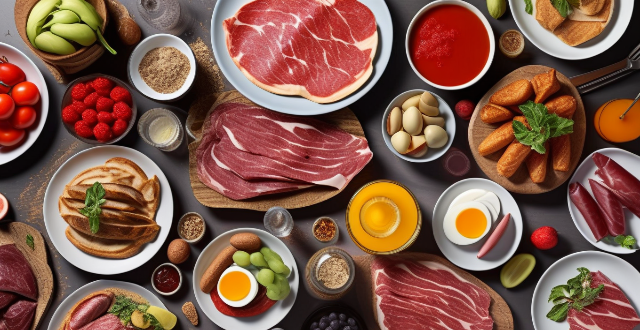
What are some strategies for reducing sugar intake in my daily meals ?
To reduce sugar intake in daily meals, strategies includeTo reduce sugar intake in daily meals, strategies include whole foods, limiting sugary swapping snacks, being mindful of condiments, gradually reducing sugar, planning meals, and getting support.

What are some time-saving tips for meal prep in the kitchen ?
Meal prep is an essential part of a healthy and organized lifestyle. Here are some time-saving tips for meal prep in the kitchen: 1. Plan ahead to avoid last-minute trips to the grocery store and ensure that you have everything you need for your meals. 2. Make a grocery list of all the ingredients you will need to save time by avoiding unnecessary trips to the store. 3. Choose simple recipes that require minimal preparation and cooking time, such as one-pot or pan recipes. 4. Cook in bulk to save time during meal prep by cooking large portions of food and then dividing them into individual servings for easy storage and reheating later in the week. 5. Use a slow cooker or pressure cooker to cook food while you are away from home, so you can come back to a delicious and ready-to-eat meal. 6. Prep vegetables ahead of time by washing, chopping, and storing them in airtight containers in the fridge for easy access when you need them. 7. Use frozen vegetables and fruits, which are just as nutritious as fresh ones and can save you a lot of time during meal prep. 8. Keep your kitchen clean and organized to save time during meal prep by ensuring that everything is easily accessible when you need it.
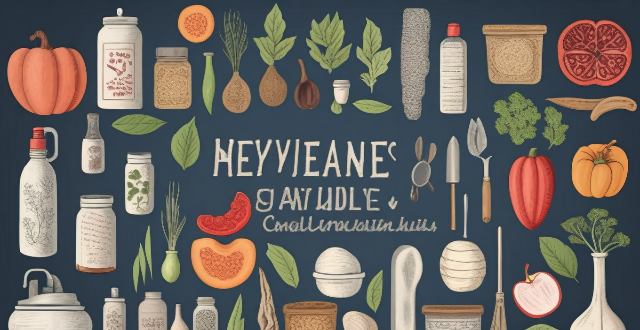
What are the key principles of food safety ?
The text outlines the key principles of food safety, which include cleanliness, avoiding cross-contamination, thorough cooking, proper storage, and using safe water and ingredients. By following these guidelines, individuals can reduce the risk of foodborne illnesses and ensure that their meals are safe for consumption.

Can you recommend any good side dishes to serve with grilled seafood ?
When it comes to serving grilled seafood, there are a variety of side dishes that can complement the flavors and textures of the fish. Here are some recommendations: 1. Grilled Vegetables: Asparagus, bell peppers, zucchini, and squash are great options for grilling alongside seafood. 2. Fresh Salads: Caprese salad, Greek salad, and seafood pasta salad are refreshing sides that pair well with grilled seafood. 3. Roasted Potatoes: Potato wedges, herbed baby potatoes, and sweet potato fries are all delicious options for roasted potatoes as a side dish. 4. Bread Options: Garlic bread, cornbread muffins, and homemade biscuits are hearty additions to any meal. 5. Rice or Grain Dishes: Lemon rice, quinoa pilaf, and couscous salad are flavorful grain-based sides that will enhance your grilled seafood experience without overpowering its natural taste.

What are some tips for meal prepping to promote healthy eating habits ?
Meal prepping is an excellent way to promote healthy eating habits. Here are some tips: 1. Plan your meals based on your dietary needs and preferences. 2. Create a shopping list of all the ingredients you'll need for the week. 3. Cook in bulk and choose recipes that can be easily portioned out. 4. Pay attention to portion sizes to avoid overeating. 5. Stay hydrated by carrying a reusable water bottle with you throughout the day.

What are the best practices for storing food and water for emergencies ?
When it comes to emergency preparedness, having a reliable supply of food and water is essential. Here are some best practices to ensure that you have what you need in case of an emergency: Food Storage: - Rotate regularly - Choose wisely - Portion control - Stay organized - Store safely Water Storage: - Quantity matters - Container choice - Replace regularly - Sanitize containers - Maintain accessibility Additional Tips: - Have a plan - Prepare for special needs - Be ready to cook